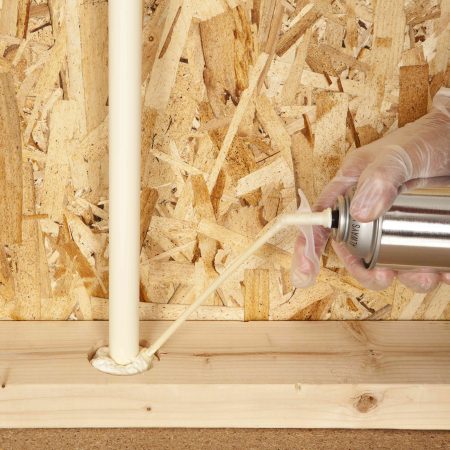If you are like many homeowners, you pay little attention to your smoke detector’s battery. You installed the smoke detector, pressed the test button once, then forgot about it until it started chirping at you as a battery replacement reminder some months later.
Yet the battery in your smoke detector is the vital link between this ordinary yet sophisticated electronic item and the safety of you and your family. Without that battery, the smoke detector is useless. In fact, even a weak battery in a smoke detector may compromise the operation of the detector. Even electric smoke detectors that are wired into a home’s electrical system are equipped with a battery backup: This means that, even if power is lost, your family and home are still protected.
How Often to Replace a Smoke Detector Battery
You should always replace your smoke detector battery immediately after it emits a warning beep or a chirp indicating that the battery is low.
In addition, most smoke detector manufacturers recommend that you replace the battery at least one time per year. To give yourself an even wider margin of safety, you should replace the battery two times per year, with the changes evenly spaced out.
If you live in an area that uses daylight savings time, the change in time can be used as a reminder for replacing the battery. Within one year, replace the battery once when switching to daylight savings time, then replace it a second time when switching back to standard time.
Tips for Changing Most Smoke Detector Batteries
Like many people, if you’ve been changing out batteries for your entire life, you have a good sense of how this is done. So you may rightfully be mystified at some of the peculiar ways that smoke alarm batteries fit into the devices.
The purpose of many of these unusual configurations is to create a fail-safe condition. This helps to ensure that smoke detectors are not installed without batteries and that the batteries are inserted correctly.
- When There Is a Red Lever: The name for this lever is a battery reminder finger. With the battery compartment empty, press the finger downward, then press the battery on top of it. Replace the door.
- When There Is a Ribbon: The ribbon should be draped across the empty battery compartment, then the battery should be replaced. This is so it’s relatively easy to extract the battery when it’s time to replace it again. Tuck the ribbon into the compartment. Replace the door.
- When There Is a Front Load Door: Located on the bottom (or room side) of the detector, this door helps you change out the battery without taking down the detector. Pry the door open with your fingernail or with a butter knife. Some doors will first need to be slid to the side before they swing open.
- When There Is a Side Door: Pry the door open and extend it to its full length. Look at the positive (+) and negative (-) charge marks on the detector and match them with the battery’s markings. Slide the door back into place.
How to Replace Most Smoke Detector Batteries
Smoke detectors’ battery replacement operations vary, but there are some common features:
- You will need to access the smoke detector with a ladder or chair as most are ceiling-mounted (though a few may be mounted high on a wall).
- Most smoke detectors must be removed from the ceiling to replace the battery, though some do have a front-loading door. Twist the detector counter-clockwise. The smoke detector should release, with the mounting plate remaining on the ceiling. Some smoke detectors will have a tamper-resistant feature to prevent children from removing the device. Disengage with the locking pin.
- Replace the battery as directed by the smoke detector instructions.
- Place the smoke detector back in the mounting bracket and slightly twist clockwise. The smoke detector should engage.
- Test the smoke detector with the testing button usually located on the face of the unit.
How to Replace a Smoke Detector Hardwired With a Backup Battery
This type of smoke detector receives household current as its main power source and has an onboard battery that is used as a backup in the event of power failure.
- At your home’s electrical service panel, turn off the household power to the circuit supplying the smoke detector by switching off the proper circuit breaker.
- Use a ladder or chair to access the smoke detector.
- Remove the smoke detector from the mounting base by turning the smoke detector counter-clockwise. If the smoke detector does not disengage, it may because of a tamper-resistant mounting bracket. Disengage by pushing the locking pin into the unit. Alternately, in some units, the pin is pulled out from between the base and the detector.
- Do not immediately try to pull off the smoke detector as it is connected with a wiring harness. Tilt the smoke detector to the side and locate the wire connector leading into the unit. Unplug the wire from the smoke detector or mounting base, as applicable
- Replace the smoke detector’s battery at the door usually located either on the side or the back of the unit.
- Reconnect the wiring harness to the unit or base, fit the unit onto the base and turn the unit clockwise engage it on the base.
- Turn on the circuit breaker to restore household power to the detector’s circuit.
- Test the smoke detector with the test button.
Read the full article here














